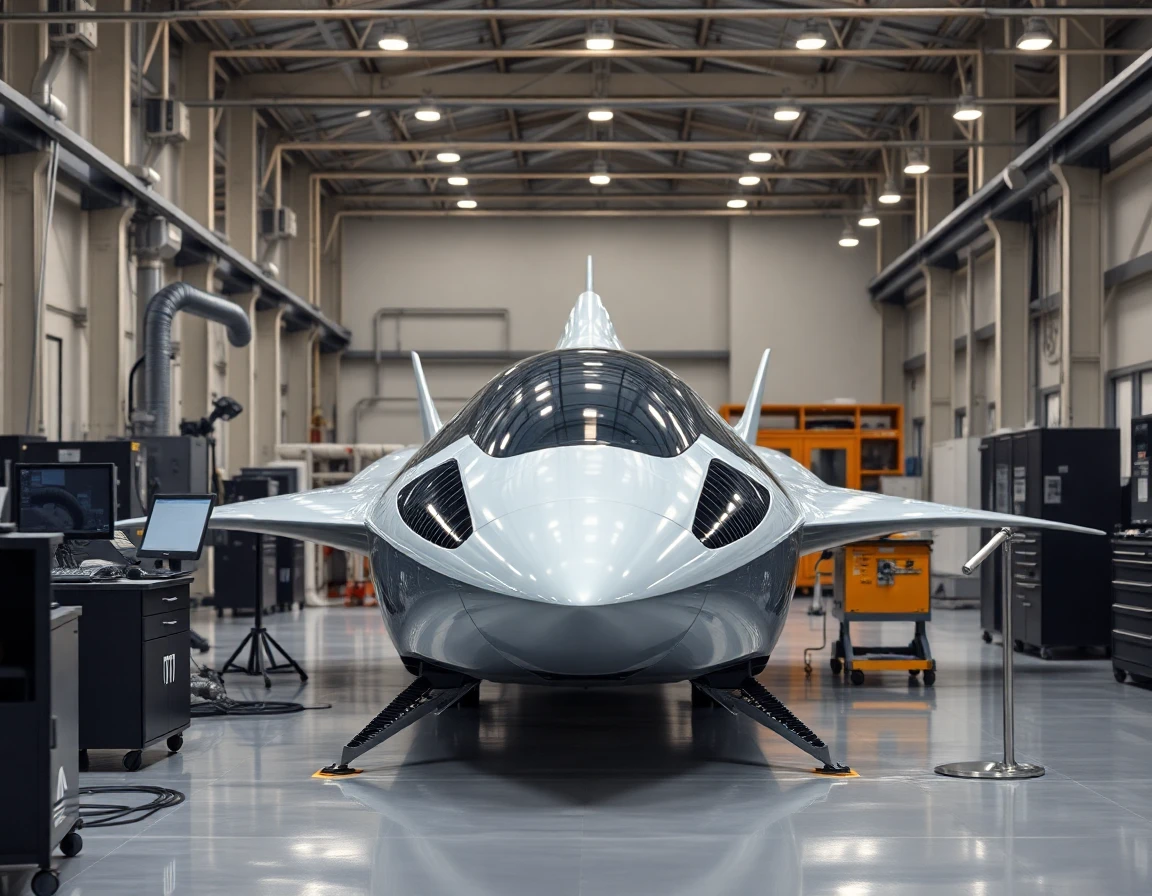Recent developments in hypersonic technology have become a focal point in the aerospace and defense sectors, highlighting not only rapid advancements but also significant strategic concerns. Countries like North Korea, India, and the United States are at the forefront of this race, showcasing a blend of military and aerospace applications that promise to redefine modern warfare and global defense strategies.
Hypersonic Missile Development and Testing
Hypersonic weapons, which travel at speeds exceeding Mach 5, are being developed by several nations, raising alarms about the balance of military power. North Korea recently announced its success in testing a new hypersonic missile system, coinciding with high-stakes diplomatic talks between the U.S. and China. As reported by Modern Diplomacy on October 23, 2025, this advancement underscores North Korea’s commitment to enhancing its missile capabilities, despite ongoing international sanctions and scrutiny.
Meanwhile, India is making significant strides with its Hypersonic Technology Demonstrator Vehicle (HSTDV), which has successfully achieved hypersonic speeds of up to Mach 6. This initiative, part of a broader five-year plan, aims not only to bolster India’s military capabilities but also to explore the potential for launching smaller satellites at a reduced cost. The implications of such developments could enhance India’s standing in the global defense landscape.
In contrast, U.S. defense analysts have voiced concerns that the Pentagon may be lagging in the hypersonic arms race. As highlighted by Orbital Today on October 15, 2025, these analysts argue that the slow pace of U.S. hypersonic weapons development could leave the nation vulnerable to adversaries with more advanced capabilities. As nations like China and Russia accelerate their hypersonic programs, the U.S. must enhance its investment and innovation in this domain.
Defense Vulnerabilities and Strategic Concerns
One critical vulnerability in the U.S. defense architecture lies in its early warning systems. Recent assessments indicate that early warning radars located in Greenland are ill-equipped to detect or intercept hypersonic missiles, a gap that poses significant risks for North American defense against nuclear threats. According to Defense News on October 24, 2025, experts suggest integrating Greenland’s defenses into NATO’s regional plans, particularly focusing on multi-command oversight to counter hypersonic threats effectively.
Such vulnerabilities highlight the necessity for advanced sensor modules, like the Advanced Sensor Module, which integrates high-performance MEMS accelerometers and gyroscopes for enhanced motion sensing capabilities. Implementing advanced detection and response technologies is crucial to maintaining strategic advantage in the face of evolving threats.
Aerospace Applications
In addition to military applications, hypersonic technology is poised to revolutionize the aerospace industry. Engineers are actively developing hypersonic space planes capable of delivering payloads anywhere on Earth in under an hour. This ambitious project necessitates the creation of new protective coatings designed to withstand the extreme conditions of hypersonic flight.
The potential for commercial aerospace applications of hypersonic technology could lead to a new era of rapid global delivery systems. Companies are exploring solutions like the ZQXXSDRSS System, which features high responsivity silicon avalanche photodiodes—critical in developing precise tracking systems for hypersonic vehicles. Additionally, innovations in thermal battery systems and precision accelerometers will be vital for ensuring stability and accuracy during high-speed operations.
Global Landscape of Hypersonic Technology
Countries such as China, Russia, Japan, South Korea, Iran, and Israel are also heavily invested in hypersonic research and development. Each of these nations is at various stages of missile development, contributing to a competitive international landscape. The collaborative and competitive nature of this field suggests that advancements will continue to emerge rapidly.
Furthermore, as nations invest in hypersonic capabilities, they are also expanding their defense infrastructure. The integration of systems like the YWJ01ZB150 System, which provides reliable azimuth determination for surveying applications, indicates the growing need for precision in the face of emerging threats.
Conclusion
The rapid advancements in hypersonic technology signify a transformative phase in both defense and aerospace sectors. As countries continue to develop and refine their hypersonic capabilities, the strategic implications for global security become increasingly complex. The need for robust defense systems, enhanced early warning capabilities, and innovative aerospace solutions will be paramount in maintaining balance in this high-stakes arena. Looking ahead, the continued evolution of hypersonic technology will undoubtedly shape the future of military strategy and global defense architectures for years to come.
References
-
Which Countries have Hypersonic Missiles in 2025? (worldpopulationreview.com) - 7/27/2024 In September 2020, India reportedly became fourth in ranking behind China, Russia and the United States of countries to research and test defense weapons.
-
US Experts Warn Pentagon Is Falling Behind In Hypersonic Weapons Race (orbitaltoday.com) A group of former US defence officials is warning that America is moving too slowly in developing hypersonic weapons, leaving it vulnerable …
-
Greenland radars vulnerable to hypersonic missiles, critics warn (www.defensenews.com) - 10/24/2025 The early warning radars on Greenland are key to defending the U.S. against nuclear attack, but they’re vulnerable to hypersonic missiles, …
-
Hypersonic Space Plane Promises Delivery in One Hour, Anywhere on Earth (www.ien.com) - 10/23/2025 Engineers Developing New Protective Coating for Spacecraft. October 22, 2025. Related Stories.
-
North Korea Fires Hypersonic Missiles Ahead of Trump-Xi Talks (moderndiplomacy.eu) - 10/23/2025 North Korea announced on Thursday that it successfully tested a “new cutting-edge weapons system” involving hypersonic projectiles, …



